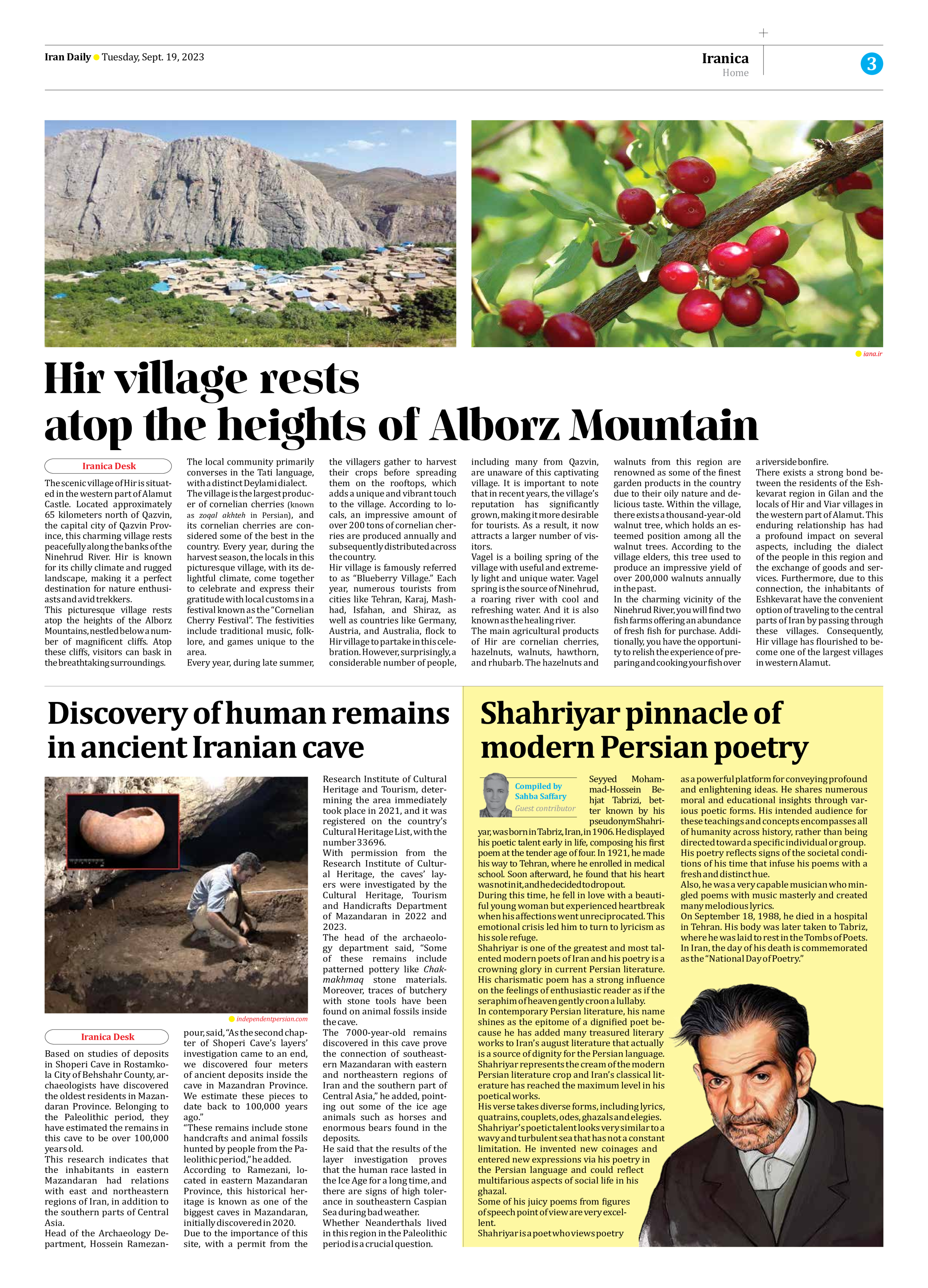
Discovery of human remains in ancient Iranian cave
Based on studies of deposits in Shoperi Cave in Rostamkola City of Behshahr County, archaeologists have discovered the oldest residents in Mazandaran Province. Belonging to the Paleolithic period, they have estimated the remains in this cave to be over 100,000 years old.
This research indicates that the inhabitants in eastern Mazandaran had relations with east and northeastern regions of Iran, in addition to the southern parts of Central Asia.
Head of the Archaeology Department, Hossein Ramezanpour, said, “As the second chapter of Shoperi Cave’s layers’ investigation came to an end, we discovered four meters of ancient deposits inside the cave in Mazandran Province. We estimate these pieces to date back to 100,000 years ago.”
“These remains include stone handcrafts and animal fossils hunted by people from the Paleolithic period,” he added.
According to Ramezani, located in eastern Mazandaran Province, this historical heritage is known as one of the biggest caves in Mazandaran, initially discovered in 2020.
Due to the importance of this site, with a permit from the Research Institute of Cultural Heritage and Tourism, determining the area immediately took place in 2021, and it was registered on the country’s Cultural Heritage List, with the number 33696.
With permission from the Research Institute of Cultural Heritage, the caves’ layers were investigated by the Cultural Heritage, Tourism and Handicrafts Department of Mazandaran in 2022 and 2023.
The head of the archaeology department said, “Some of these remains include patterned pottery like Chakmakhmaq stone materials. Moreover, traces of butchery with stone tools have been found on animal fossils inside the cave.
The 7000-year-old remains discovered in this cave prove the connection of southeastern Mazandaran with eastern and northeastern regions of Iran and the southern part of Central Asia,” he added, pointing out some of the ice age animals such as horses and enormous bears found in the deposits.
He said that the results of the layer investigation proves that the human race lasted in the Ice Age for a long time, and there are signs of high tolerance in southeastern Caspian Sea during bad weather.
Whether Neanderthals lived in this region in the Paleolithic period is a crucial question.







